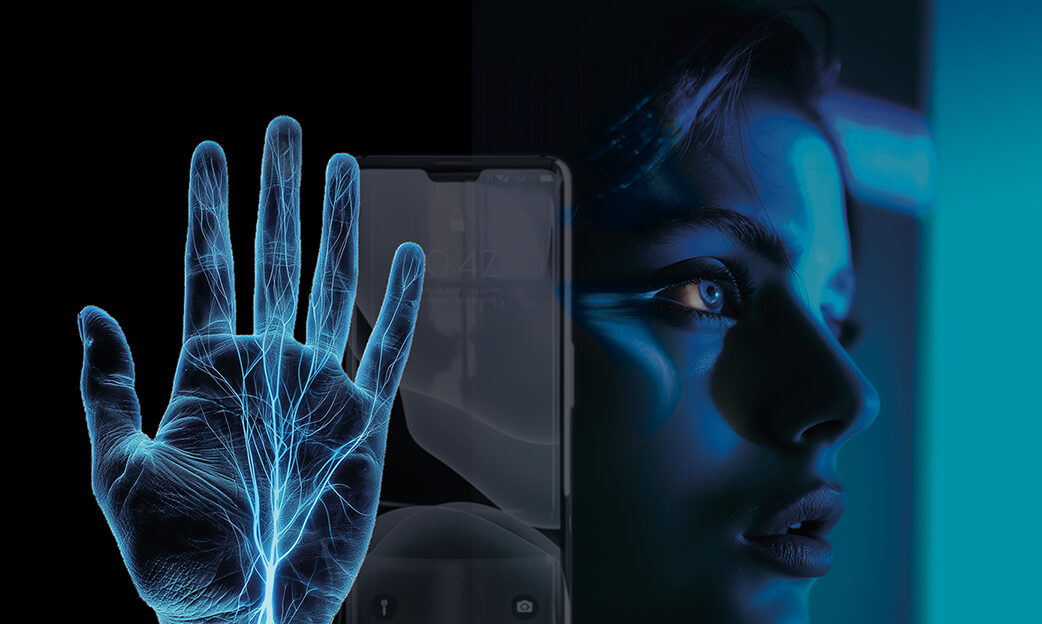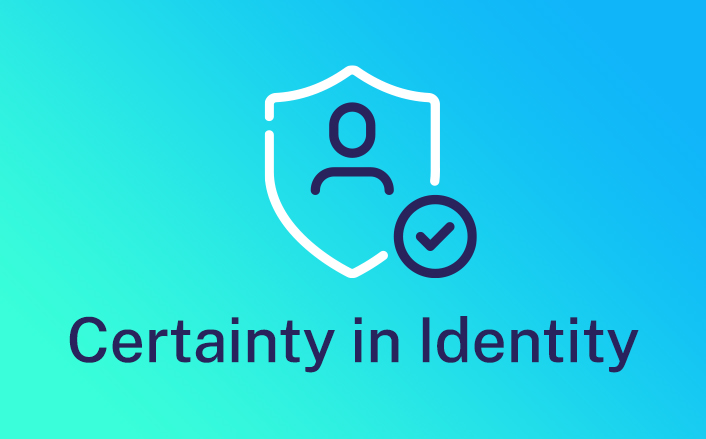Certainty in Identity or Seamless Customer Experience: The Trade-Off Myth
The common refrain about an inevitable trade-off between robust security in identity and seamless customer experience is more outdated myth than current reality. With the right approach and modern technology solutions, the reverse can be true.
Many organizations struggle to balance robust security in client identity verification and authentication with seamless customer experience. It seems to be taken for granted that there is an inherent trade-off between the two—the stronger an organization’s defenses against cyberthreats, the more customer experience suffers as protections meant to prevent unauthorized access by threat actors increase the complexity of access for clients. For client-centric organizations, it’s worth questioning: In today’s modern world, is there an unavoidable trade-off between security in identity and customer experience?
Undeniably, the pain points resulting from such a trade-off are easily demonstrated by common client experiences navigating layers of security meant to protect identities, accounts, and transactions. Commonplace examples include Captcha images that are difficult for humans to decipher; account lockouts due to forgotten passwords and one-time passwords (OTPs) that never arrive or arrive too late to use; exhaustive challenge questions from contact centers; and time-consuming, multistep account reset hurdles. And these examples are only a modest start to the list.
Yet, despite the apparent proof provided by these examples of all too frequent and frustrating client experiences, the belief that there is an unescapable compromise between security in identity and customer experience is a misconception. With the right approach to system design combined with modern security solutions, it is possible to deliver both robust security and a frictionless experience for clients. In fact, with the right approach and today’s technology, organizations can create certainty in identity while enhancing customer experience and unlocking possibilities to build client relationships.
So, why do organizations struggle to do this and how is the struggle overcome?
The Wrinkle Hindering Seamless Experience
The root of the challenge many organizations face in delivering both robust security in identity and seamless customer experience is the continued use of legacy probabilistic identity and security systems, which are commonly based on passwords coupled with one-time passwords (OTPs) and other knowledge-based authentication (KBA) methods. These conventional, password-based systems are tedious to use and can be easy to hack. Moreover, these systems leave clients shouldering a large burden of defense against increasingly sophisticated security threats by requiring them to manage and protect their passwords and other KBA data in addition to the devices and network connections they use to access the systems.
As the modern threat environment advances, these conventional systems become more vulnerable to threats, such as social engineering, malware, and adversary-in-the-middle attacks (AiMT). In response to evolving threats, organizations may add security layers, including implementing multifactor authentication (MFA), to strengthen protections and guard against compromised credentials. However, the addition of security layers in traditional systems—even when MFA is limited to two factors (2FA)—means additional steps required for clients, creating more cumbersome authentication experiences.
Additionally, organizations may combine point solutions and disparate processes for different channels, creating fragmented systems with inconsistent customer experiences across channels. This can both compromise security, which is only as strong as the weakest link in a system, and add friction for clients, who must navigate different processes and authentication methods depending on the channel of interaction.
It is no wonder that in the modern, ever-evolving threat environment, conventional systems may fall short on delivering both robust security and seamless customer experience despite the efforts of organizations to find an optimal balance between the two.
Delivering Certainty and Seamless Experience
The solution is to eliminate the balancing act. It requires organizations embrace a new paradigm in identity verification and authentication that ensures there is no trade-off between security and customer experience. By moving away from traditional identity and security models and shifting to a passwordless, deterministic approach, organizations can deliver both certainty in identity and seamless, omnichannel customer experience.
And this paradigm shift is becoming a business imperative. Client-centric businesses compete on customer experience. As technology advances, today’s clients are increasingly intolerant of complicated and fragmented customer experiences that hamper efficiency. They are accustomed to the convenience of a modern, app-driven, click-and-go world where the likes of Amazon and Uber have set expectations. The time is now to eliminate passwords, cumbersome account reset hurdles, tedious multistep website visitor experiences, and tiresome call-center questions to prove who users are. In the modern era, clients need security but they also want simplicity and consistency—every time, all the time, across any channel.
This is why creating certainty in identity requires both closing the gaps in traditional systems by seamlessly securing the full customer journey and moving beyond reliance on probabilities—or the likelihood that something is true, e.g., the user providing a correct response is the client and not a threat actor. Uniken does this with its single-stack, client-invisible REL-ID security platform. By adhering to security- and privacy-by-design principles and taking a deterministic, zero-trust security approach, Uniken designed REL-ID to safeguard the full customer journey without burdening clients. REL-ID incorporates security that addresses endpoint threat detection, identity verification (IDV), authentication, and channel security solutions all in one, comprehensive platform. With REL-ID, passwords and other conventional KBA methods are unnecessary. REL-ID uses six-layer, frictionless mutual MFA between the client and the organization, at the center of which is a cryptographic private-private key pair—a fully deterministic credential that cannot be stolen, phished, harvested, or otherwise compromised. This seamless authentication process is invisible to the client and consistent across any channel while ensuring the organization has algorithmic certainty of its client, their device, and their connection to the organization’s systems for every client interaction, from standard login to transaction verification, account recovery, and new device activation.
Elevating Experience with Biometric Identity
The use of biometric identification technologies, such as fingerprint and facial recognition, is becoming increasingly widespread as comfort and familiarity with these technologies grows. When integrated into modern identity and security solutions, biometrics can play an important role in both seamless customer experience and fraud prevention. Uniken’s REL-ID security platform demonstrates this. Uniken leverages both on-device and server-side biometric capabilities as part of REL-ID, which automatically orchestrates the use of these technologies as appropriate for the client situation. Integration of biometrics into REL-ID’s deterministic identity and security platform helps deliver certainty in identity verification and passwordless, omnichannel authentication that is frictionless for clients. The uniqueness of a person’s biological traits combined with advanced biometric, security, and encryption technologies allow the creation of identity verification solutions that are resistant to spoofing and use biometric templates that cannot be stolen or reverse engineered.
Biometric technologies are also progressing rapidly, increasing in accuracy and security, and opening up advanced capabilities that significantly improve customer experience in ways that at times may seem reminiscent of science fiction. A real-world example heralding the arrival of the future of authentication is Uniken’s REL-ID palm vein authentication for in-person identity verification. This advanced biometric technology allows organizations to authenticate in-person clients in seconds through a simple, contactless scan of a client’s palm with an efficacy far surpassing that of any other biometric authentication method currently available. Combined with the security of the REL-ID platform, this state-of-the-art technology helps eliminate every major vector of fraud while delivering an unequalled customer experience for in-person client interactions.
The Benefits of No Balancing Act
Security is often considered a hindrance to creating customer experiences that support business-building. When organizations eliminate the balancing act between security and customer experience, however, they also unlock possibilities for business growth. With Uniken’s REL-ID platform, for example, clients accept highly targeted marketing offers, delivered at the exact time of need, faster and at 10- to 20-times higher rates. By delivering both certainty in identity and seamless customer experience, client engagement increases and organizations are better able to target clients with the right offers at the right moments in the customer journey to build client relationships and to expand share of wallet. Additionally, by replacing manual authentication approaches such as those used in call centers, REL-ID can often be a net hard dollar savings to organizations. For Uniken customers, these benefits typically outweigh the investment and result in a rapid ROI.
Considering the substantial business benefits of eliminating the balancing act, client-centric organizations have a lot to gain by rejecting the idea that there is an inherent trade-off between security in identity and seamless customer experience. Competing successfully in today’s modern world necessitates a reframe of this thinking. The real trade-off is not a choice of security or customer experience; organizations trade off both by maintaining patchwork security solutions from the past. By shifting the security paradigm to embrace a passwordless, deterministic approach, the “or” becomes “and”. Organizations achieve both—and a business-building future.
About Uniken
Uniken accelerates possibilities for client-centric organizations by creating certainty in identity and security while delivering amazing customer experiences. An innovator and pioneer in cybersecurity, Uniken serves customers of all sizes, worldwide, across a variety of industries.
Discover more about how your organization can shift the “or” to “and” with Uniken’s REL-ID Security Platform: The Platform of Possible



